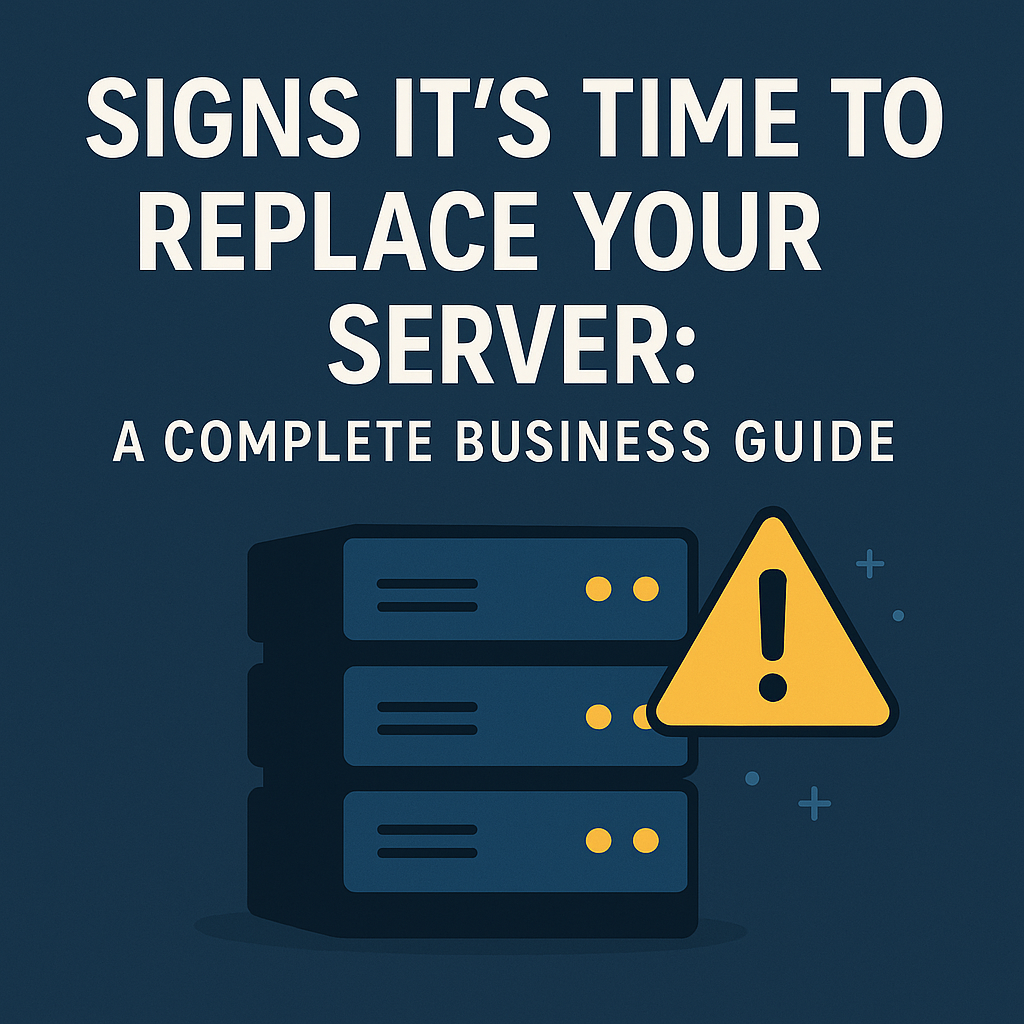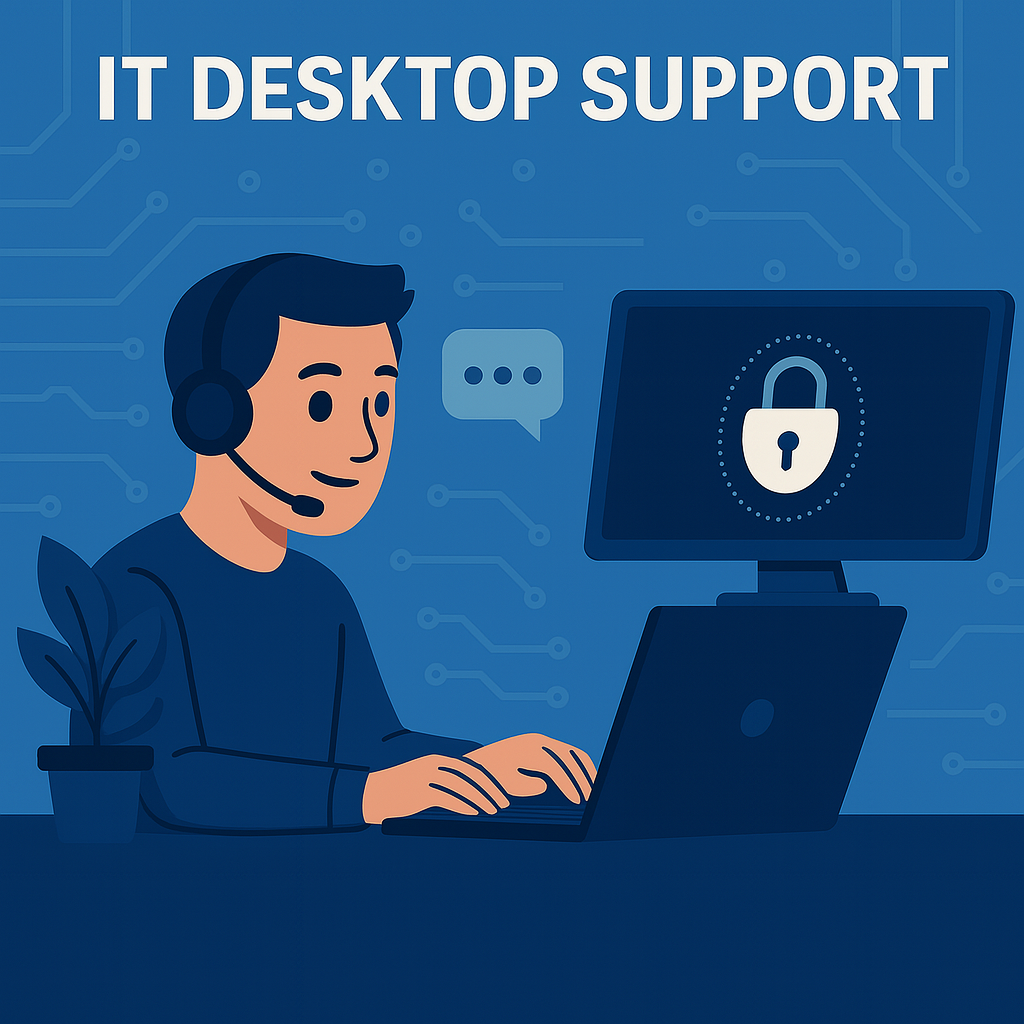The Ultimate Server Maintenance Checklist for 99.99% Uptime

Achieving 99.99% uptime requires systematic server maintenance that prevents failures before they occur. This comprehensive checklist ensures your servers run reliably while minimizing unexpected downtime that costs businesses an average of $5,600 per minute.
Understanding Server Maintenance and Its Critical Importance
Server maintenance encompasses all activities performed to keep servers operating at peak performance. Regular maintenance prevents hardware failures, security vulnerabilities, and performance degradation that lead to costly downtime. Professional server support teams utilize proactive server management strategies to maintain optimal system performance.
Modern businesses depend entirely on server availability across traditional and virtual private server market segments. When servers fail, operations halt, customers cannot access services, and revenue stops flowing. Proper maintenance transforms reactive firefighting into proactive prevention, whether managing on-premises infrastructure or implementing cloud based server management solutions.
Daily Server Maintenance Essentials
Performance Monitoring and System Health Checks
Check CPU usage, memory consumption, and disk space utilization every day. High resource usage indicates potential bottlenecks before they cause outages. Set up automated alerts when usage exceeds 80% thresholds to prevent system crashes.
Review system logs for error messages, warnings, and unusual activity patterns. Logs reveal emerging issues that require immediate attention. Focus on application logs, system event logs, and security logs during daily reviews to catch problems early.
Backup Verification and Data Protection
Confirm that automated backups completed successfully overnight. Failed backups leave systems vulnerable to data loss during hardware failures. Test backup integrity by performing random restore operations weekly to ensure data recovery capabilities.
Document backup locations, retention policies, and recovery procedures clearly. Multiple backup copies across different geographic locations provide additional protection against localized disasters and system failures.
Network Connectivity and Communication Testing
Test network connections between servers, load balancers, and external services. Network issues often manifest gradually before causing complete failures. Monitor bandwidth usage and latency to identify performance degradation patterns.
Verify that all network interfaces show active status and proper configuration. Review firewall logs for blocked traffic that might indicate security threats or misconfigurations affecting system performance.
Weekly Server Maintenance Activities
Security Updates and Patch Management
Install security patches and critical updates during scheduled maintenance windows. Vulnerabilities in operating systems provide entry points for cyberattacks that compromise entire infrastructures and cause extended downtime.
Test patches in development environments before applying them to production servers. Create rollback plans for updates that cause unexpected compatibility issues or system instability.
Security Configuration Reviews
Audit user accounts, permissions, and access controls weekly. Remove accounts for departed employees and validate that current users have appropriate access levels. Excessive permissions create security risks and compliance violations.
Check antivirus definitions and security software status across all servers. Outdated security tools cannot protect against emerging threats and malware variants that target server infrastructure.
Performance Analysis and Trending
Compare current performance metrics against historical baselines to identify degradation patterns. Gradual performance decline often precedes catastrophic failures that catch administrators unprepared for emergency situations.
Review application response times, database query performance, and storage I/O statistics. Performance trends reveal capacity planning needs and optimization opportunities for maintaining peak system performance.
Monthly Server Maintenance Procedures
Hardware Health and Component Assessment
Inspect server hardware components including hard drives, memory modules, and cooling systems carefully. Physical failures account for approximately 25% of server downtime incidents affecting business operations.
Check RAID array status and replace failing drives before arrays become degraded. Monitor temperature sensors to ensure adequate cooling prevents thermal shutdowns and hardware damage.
Capacity Planning and Resource Management
Analyze growth trends in storage usage, processing demand, and network traffic patterns. Proactive capacity planning prevents resource exhaustion that causes service interruptions and system failures.
Project future requirements based on business growth and usage patterns accurately. Order additional hardware with sufficient lead time to avoid emergency procurement at premium prices during critical situations.
Comprehensive Security Auditing
Conduct comprehensive security assessments including vulnerability scans and penetration testing. Security breaches often result from unpatched vulnerabilities and misconfigurations that regular audits identify before exploitation.
Review access logs for suspicious activity patterns and unauthorized access attempts. Update security policies based on emerging threats and industry best practices for maintaining robust protection.
Quarterly Server Maintenance Tasks
Disaster Recovery Testing and Validation
Perform complete disaster recovery exercises that simulate various failure scenarios realistically. Theoretical disaster recovery plans often fail during actual emergencies due to untested assumptions and outdated procedures.
Test backup restoration procedures, failover mechanisms, and communication protocols thoroughly. Document recovery time objectives and recovery point objectives to ensure they meet business requirements consistently.
Hardware Lifecycle and Replacement Planning
Evaluate server hardware age and plan replacement schedules before components reach end-of-life status. Aging hardware becomes increasingly unreliable and expensive to maintain over time.
Review warranty coverage and support contracts for critical systems regularly. Expired warranties leave organizations vulnerable to extended downtime during hardware failures and emergency repairs.
Performance Optimization and System Tuning
Conduct detailed performance analysis and implement optimization strategies systematically. Regular tuning maintains optimal performance as workloads evolve and systems age over operational periods.
Optimize database configurations, clean up temporary files, and defragment storage systems. Small optimizations compound over time to maintain peak performance levels across infrastructure.
Annual Server Maintenance Requirements
Infrastructure Architecture Review and Assessment
Assess entire infrastructure design for single points of failure and scalability limitations. Annual reviews ensure that architecture supports business growth and evolving requirements effectively.
Evaluate new technologies and best practices that could improve reliability and performance. Legacy systems often lack modern reliability features that newer solutions provide for enhanced operations.
Compliance and Documentation Management
Update all documentation including network diagrams, configuration procedures, and emergency contact lists. Accurate documentation enables faster problem resolution and knowledge transfer between team members.
Review compliance requirements and audit trails to ensure regulatory adherence. Many industries require specific maintenance procedures and documentation standards for operational compliance.
Server Maintenance Tools and Automation Solutions
Advanced Monitoring and Alerting Systems
Deploy comprehensive monitoring solutions that track all critical metrics continuously. Automated monitoring identifies issues faster than manual checks and enables proactive responses. Many organizations leverage outsourced server monitoring services to provide 24/7 oversight without maintaining internal staff around the clock.
Configure intelligent alerting that minimizes false positives while ensuring genuine issues receive immediate attention. Alert fatigue reduces response effectiveness and masks real problems that require immediate server support services intervention.
Configuration Management and Automation
Implement configuration management tools that maintain consistent settings across all servers. Manual configuration changes introduce errors and inconsistencies that cause unexpected failures. Server support company professionals often recommend automated configuration management to reduce human errors.
Use infrastructure as code principles to version control and automate configuration deployments. Automated configurations reduce human errors and improve deployment consistency across cloud based server management environments.
Professional Outsourced Server Management Solutions
Many organizations benefit from outsourced server management and outsourced server support to access specialized expertise without maintaining large internal teams. Professional server support providers offer comprehensive server management support services including monitoring, maintenance, and emergency response capabilities.
Company outsourced server arrangements provide access to advanced tools and experienced technicians while reducing operational overhead. Outsourced server monitoring ensures continuous oversight and rapid response to emerging issues across distributed infrastructures.
Maintenance Scheduling and Coordination
Utilize maintenance scheduling tools that coordinate tasks across multiple administrators and systems. Proper scheduling prevents conflicting activities and ensures adequate staffing during maintenance windows.
Plan maintenance windows during low-usage periods to minimize business impact. Communicate schedules clearly to stakeholders and maintain emergency procedures for urgent issues requiring immediate attention.
Common Server Problems and Prevention Strategies
Storage System Failures and Solutions
Storage failures cause approximately 31% of server downtime incidents. This common server problem requires implementing RAID configurations, monitoring disk health metrics, and maintaining hot spare drives to minimize storage-related outages. IT server support teams often identify storage issues as the primary concern during troubleshooting sessions.
Server troubleshooting for storage problems involves using predictive analytics to identify failing drives before complete failure occurs. Replace drives showing early warning signs during scheduled maintenance windows to prevent catastrophic data loss.
Memory-Related Issues and Resolution
Memory failures often manifest as application crashes and system instability, representing another frequent server problem requiring immediate attention. Perform regular memory tests and monitor error correction statistics to identify failing memory modules before they cause widespread system issues.
Solutions to server problems related to memory include maintaining spare memory modules for critical servers to enable rapid replacement. Document memory configurations to ensure proper replacement procedures during emergency situations.
Network Connectivity Problems and Fixes
Network problems disrupt communication between servers and external services, particularly affecting cloud server migration projects and SQL server transformation market implementations. Implement redundant network paths and monitor connection quality continuously to prevent connectivity-related outages.
Maintain up-to-date network documentation including cable layouts, switch configurations, and IP address assignments. Clear documentation accelerates server troubleshooting during network issues and supports efficient problem resolution.
Creating an Effective Maintenance Schedule
Risk-Based Task Prioritization
Prioritize maintenance tasks based on potential impact and probability of failure. Critical systems require more frequent attention than redundant or less important components in the infrastructure.
Classify servers by business criticality and adjust maintenance frequencies accordingly. Mission-critical servers may require daily attention while development servers need less frequent maintenance cycles.
Resource Allocation and Team Management
Assign maintenance responsibilities to specific team members and ensure adequate staffing for all scheduled activities. Maintenance backlogs increase the likelihood of preventable failures that could disrupt operations.
Cross-train multiple administrators on critical procedures to prevent single points of failure in maintenance capabilities. Knowledge sharing ensures continuity during staff absences and emergency situations.
Documentation and Activity Tracking
Document all maintenance activities including dates, procedures performed, and results obtained. Maintenance logs provide valuable information for troubleshooting and compliance auditing purposes.
Track maintenance effectiveness by monitoring downtime incidents and their root causes. Regular analysis identifies areas where maintenance procedures need improvement for better reliability.
Measuring Maintenance Effectiveness and Success
Uptime Metrics and Performance Indicators
Calculate actual uptime percentages and compare against target goals. 99.99% uptime allows only 52.56 minutes of downtime per year, requiring excellent maintenance practices and system reliability.
Track mean time between failures and mean time to recovery for all systems. These metrics indicate maintenance effectiveness and help identify improvement opportunities for enhanced performance.
Cost Analysis and Financial Impact
Monitor maintenance costs including labor, replacement parts, and service contracts. Effective maintenance reduces total cost of ownership through fewer emergency repairs and extended equipment life.
Compare maintenance costs against potential downtime costs to justify maintenance investments. Proactive maintenance typically costs 60-80% less than reactive emergency repairs and system replacements.
Performance Trending and Analysis
Analyze long-term performance trends to validate maintenance effectiveness. Well-maintained systems show stable or improving performance over time rather than gradual degradation.
Use performance baselines to identify when maintenance activities successfully restore optimal operation levels. Trending analysis guides future maintenance planning and resource allocation decisions.
Frequently Asked Questions About Server Maintenance
How often should I perform server maintenance?
Server maintenance frequency depends on system criticality and usage patterns. Daily monitoring and weekly updates represent minimum requirements for production servers. Critical systems may need additional attention while development servers can follow less frequent schedules.
What are the most common server problems organizations face?
The most frequent server problems include storage failures, memory issues, network connectivity problems, and performance degradation. Solutions to server problems typically involve proactive server management, regular maintenance, and having appropriate backup systems in place. Many organizations partner with a server support company to address these issues before they cause significant downtime.
How do I minimize downtime during maintenance?
Minimize maintenance downtime by scheduling activities during low-usage periods, using redundant systems for failover, and preparing all procedures in advance. Test maintenance procedures in development environments before applying them to production servers.
What tools should I use for server maintenance?
Essential server maintenance tools include monitoring systems like Nagios or Zabbix, configuration management platforms like Ansible or Puppet, and backup solutions like Veeam or Bacula. Choose tools that integrate well with your existing infrastructure.
How do I know if my maintenance is effective?
Measure maintenance effectiveness through uptime metrics, mean time between failures, and performance trends. Effective maintenance results in consistent uptime above 99.9%, stable performance metrics, and reduced emergency repair incidents.
Should I outsource server maintenance?
Outsourced server support can be highly beneficial for organizations lacking internal expertise or resources. Professional server support providers offer comprehensive server support services including proactive server management, emergency response, and specialized expertise across various platforms.
Evaluate outsourcing options based on cost, expertise requirements, response times, and control preferences for your specific environment. Many organizations find that outsourced server management provides better coverage and expertise than maintaining internal IT server support teams, particularly for complex environments involving cloud server migration or SQL server transformation market requirements.
How do I choose between in-house and outsourced server support?
Choose between internal IT server support and outsourced server monitoring based on your organization’s size, technical expertise, and budget constraints. Outsourced server support often provides better coverage, specialized expertise, and cost-effectiveness for small to medium businesses, while larger organizations may benefit from hybrid approaches combining internal teams with professional server support for specialized tasks.
What should I consider when planning cloud server migration?
Cloud server migration requires careful planning including assessment of current infrastructure, selection of appropriate cloud services, and implementation of cloud based server management tools. Consider factors such as data transfer requirements, application compatibility, security configurations, and ongoing management needs when planning migration projects. Many organizations benefit from professional server support during migration to ensure seamless transitions.
What should I do if I discover a critical issue during maintenance?
When discovering critical issues during maintenance, immediately assess the potential impact and determine if emergency action is required. Document the issue thoroughly, implement temporary fixes if necessary, and schedule permanent repairs during the next maintenance window. Organizations with outsourced server management can escalate critical issues to their server support services provider for immediate assistance.
How do I create a maintenance budget?
Create maintenance budgets by calculating labor costs, replacement part expenses, service contracts, and tool licensing fees. Include contingency funds for emergency repairs and factor in potential downtime costs to justify maintenance investments. Organizations using server management support services should budget for ongoing service contracts and potential scaling needs within the growing virtual private server market.
How do I train staff for proper server maintenance?
Train maintenance staff through formal certification programs, hands-on practice in test environments, and mentoring with experienced administrators. Maintain training records and provide ongoing education as technologies evolve.
What documentation should I maintain for server maintenance?
Essential maintenance documentation includes system configurations, maintenance procedures, contact information, network diagrams, and historical maintenance logs. Keep documentation current and accessible to all relevant team members.




No comment